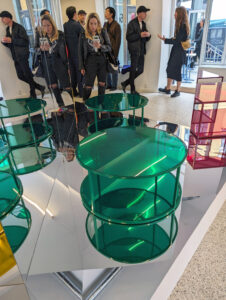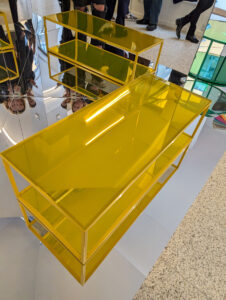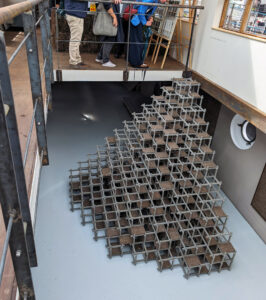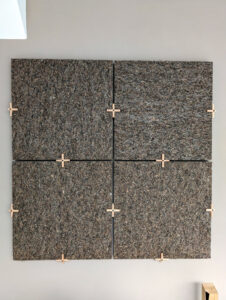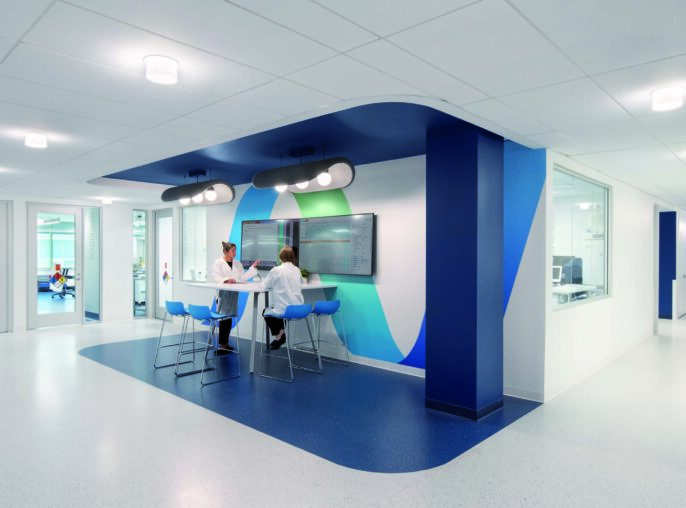Insight
Discovering the Future of Design: Bold Colours, Repurposed Innovation, and Sustainable Craftsmanship

In the ever-evolving world of design, a few key themes are emerging as frontrunners: bold colour palettes, innovative repurposing, and a steadfast commitment to sustainability. Read on to explore these exciting trends and see some of the impressive examples that are shaping the industry today.
Colour: Bold Tones and Reflective Surfaces
In the realm of design, colour is more than just an aesthetic choice; it’s a powerful tool that can transform spaces and evoke emotions. Bold tones paired with reflective surfaces are taking center stage, creating eye-catching contrasts and making colours pop like never before.
Offecct’s New Vertigo Collection: This series of tables exemplifies the power of vibrant colour. With striking hues and sleek, reflective surfaces, these pieces bring a dynamic energy to any room. They challenge traditional notions of design by combining functionality with a vivid colour palette.
Ro’s Scandinavian Chairs: Ro takes a fresh approach to traditional Scandinavian timber chairs by introducing colour blocking. This modern twist not only highlights the craftsmanship behind each piece but also adds a playful element to their classic design.
Schönbuch’s Lacquered Stools and Cabinets: For those looking to add a burst of colour to their interiors, Schönbuch offers bright lacquered hues in their stools and cabinets. These pieces serve as focal points, providing accents and pops of vibrancy that can redefine a space’s aesthetic.
Refshaleøen: A Showcase of Repurposed Innovation
Refshaleøen, a dynamic design district, is a testament to the creative possibilities of repurposing and experimental design. Here, innovation meets sustainability as designers push the boundaries of what is possible with recycled materials and unconventional concepts.
Bill Amberg Studio’s Saddle Leather Tub Chairs: Known for their innovative use of materials, Bill Amberg Studio showcases their clever use of saddle leather in creating unique tub chairs. This approach not only highlights the versatility of leather but also underscores a commitment to quality and craftsmanship.
Bjarke Ingels Group’s ‘CopenHill’: A standout example of design ingenuity is the CopenHill waste-to-energy plant. This remarkable structure combines functionality with recreation, featuring a ski slope on its roof. It exemplifies how design can intersect with sustainability to create multifaceted urban solutions.
Sustainability: Craftsmanship Meets Longevity
In today’s design landscape, sustainability is not just a trend; it’s a guiding principle. Emphasizing handmade, low-tech approaches and durable materials, designers are creating products that prioritize longevity over fleeting fads.
Søuld’s Eelgrass Acoustic Panels: Søuld has crafted beautiful fire-retardant acoustic panels from eelgrass, incorporating thoughtful fixing details. These panels not only enhance acoustics but also represent a commitment to sustainable material sourcing and innovative design.
Wuud’s Steamed and Embossed Birch Planks: Wuud’s dramatic use of steamed and embossed birch planks showcases the beauty of natural materials. By focusing on sustainable forestry and innovative production techniques, Wuud creates products that are both striking and environmentally responsible.
Louise Roe’s Single Material Designs: Louise Roe is renowned for her considered use of single materials in her furniture and accessories. By minimizing material diversity, her designs emphasize simplicity and sustainability, proving that less can indeed be more.
The future of design is bright, bold, and beautifully sustainable. With designers pushing the boundaries of colour, repurposing materials in ingenious ways, and committing to sustainable practices, the industry is poised for an exciting transformation. These trends not only reflect changing consumer preferences but also demonstrate a deeper understanding of the role design plays in shaping our world.
